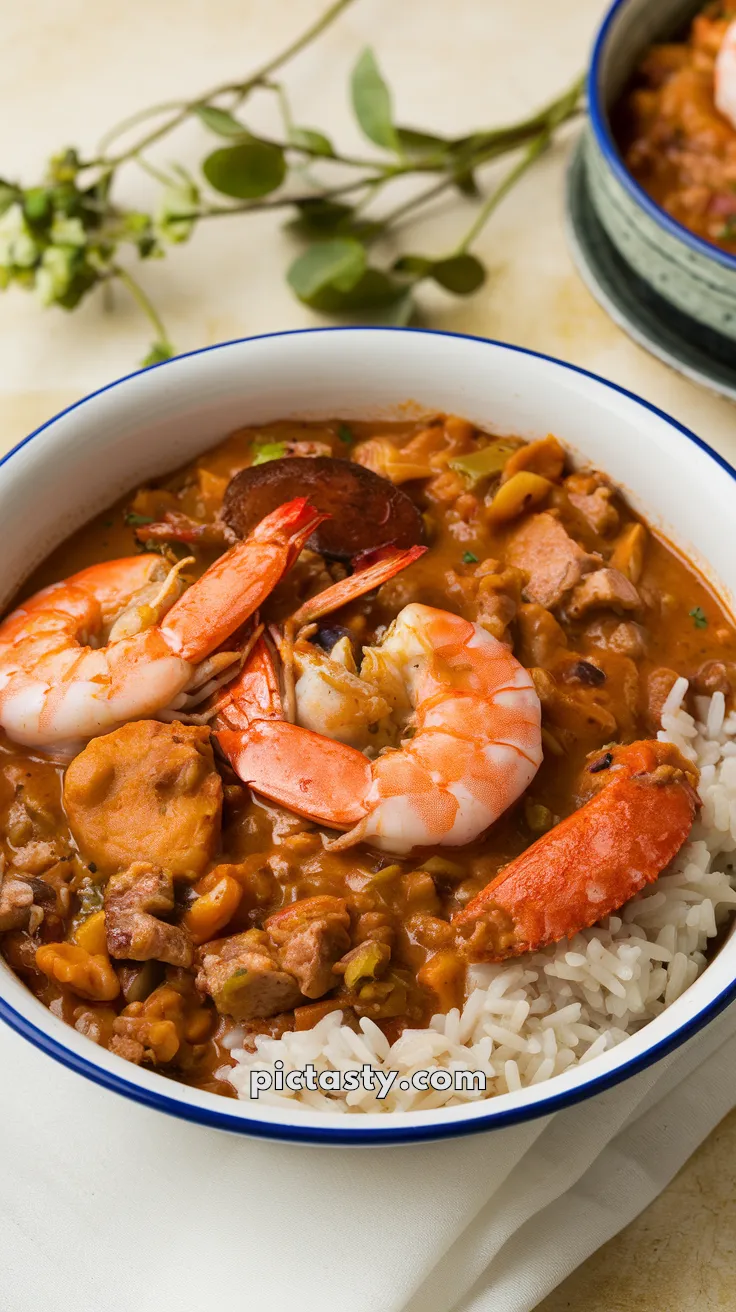Have you ever craved something hearty, out-of-the-ordinary, and bursting with unique flavors? Well, that’s how I felt when I first discovered gumbo. Picture yourself diving into a vibrant mosaic of tastes and textures – that’s gumbo for you!
The beauty of gumbo is like a well-conducted orchestra. Each ingredient plays its part, contributing to a symphony of flavors that will leave your tastebuds dancing. Like music to the ears, gumbo is music to the palate. But how does one create such a delightful culinary concert, you may ask? Well, let me guide you.
The History of Gumbo
Gumbo, a Louisiana Creole dish, has its roots in several cultures, including West African, French, and Spanish. It’s no wonder this dish is so diverse and flavorful. Gumbo is traditionally served over rice and it’s a staple at many Southern tables, particularly during celebrations and gatherings.
The importance of gumbo to local communities cannot be overstated. Cooking and sharing a pot of gumbo is a cherished tradition, a source of communal bonding, and a celebration of cultural heritage. There’s no better way to understand a culture than through its food, right?
The Magic of Roux
The foundation of every good gumbo is a rich, dark roux. Roux is a simple mix of flour and fat, cooked over low heat until it reaches the desired color. However, the making of roux is an art in itself, requiring patience and constant stirring to prevent burning.
Roux, to gumbo, is like the bass line to a song. It’s the rhythmic backbone that adds depth and richness, tying all the other elements together. The darker the roux, the deeper the flavor, so be brave and challenge yourself to go a shade darker than you think you should.
Varieties of Gumbo
There’s a wide array of gumbo variations, each with its own unique charm. The most common ones include seafood gumbo, chicken and sausage gumbo, and vegetarian gumbo. The ingredients you choose depend on your personal preference and dietary needs.
Regardless of the ingredients, all gumbo varieties have one thing in common: the Holy Trinity of onion, bell pepper, and celery. This flavor base is another key player in gumbo, providing a balance of flavors and enhancing the overall dish.
Ingredients
- 1 cup vegetable oil
- 1 cup all-purpose flour
- 1 large onion, diced
- 1 bell pepper, diced
- 2 celery stalks, diced
- 4 cloves of garlic, minced
- 1 pound smoked sausage, sliced
- 1 pound chicken thighs, cut into chunks
- 8 cups chicken broth
- 1 teaspoon salt
- 1/2 teaspoon black pepper
- 2 bay leaves
- 1 teaspoon thyme
- 1 pound shrimp, peeled and deveined
- 1 cup chopped parsley
- 4 cups cooked rice
Instructions
- In a large pot, make a roux by combining the oil and flour. Cook over low heat, stirring constantly until the mixture turns dark brown.
- Add the onions, bell pepper, celery, and garlic. Cook until the vegetables are softened.
- Add the sausage, chicken, broth, salt, pepper, bay leaves, and thyme. Bring the mixture to a simmer and cook for about 2 hours.
- Add the shrimp and parsley. Cook for an additional 5 minutes.
- Serve the gumbo over rice. Enjoy!
Cook and Prep Times
- Prep Time: 30 minutes
- Cook Time: 2 hours and 30 minutes
Tips for Gumbo
For a flavorful gumbo, don’t rush the roux. Take your time to achieve a dark color. Also, feel free to customize your gumbo with your favorite ingredients. Lastly, gumbo always tastes better the next day, so it’s a great dish to make ahead.
Why This Recipe is a Must-Try
This gumbo recipe is a must-try because it’s a delightful blend of flavors that transports you to the heart of Louisiana with each bite. It’s hearty, comforting, and impressively tasty. The layers of flavor from the roux, the Holy Trinity, and the combination of meats and seafood make this dish a unique culinary experience.
Nutrition Information
- Calories: 450 kcal per serving

